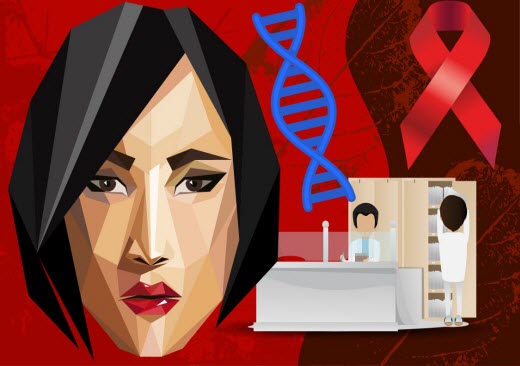
When you first find out that you have HIV, you’ll need to adjust to this significant change in your life. Family members and friends might be able to help you, or you could talk with a counselor or a support group. Make sure to take time out to educate yourself and consider these three steps:
1. Stay tuned in to your labs
2. Put a plan together
3. Think about starting treatment
In addition to your regular medical exams, there are two special blood tests that your healthcare provider will perform every three to six months. These tests are used to help monitor your HIV progression and overall health, and to help you and your healthcare provider decide when it’s time to start HIV treatment, to see if your meds are working and to know when to change meds:
To know the level of HIV in your body, the viral load test is essential. It measures the amount of HIV in your blood, and you want this number to be as low as possible. One key goal of HIV therapy is to achieve and maintain an undetectable viral load.
The CD4 cell count helps show how strong your immune system is. It counts how many infection-fighting white blood cells you have (also called T cells or T-helper cells). The more CD4 cells you have, the stronger your immune system will be. In the event that your CD4 cell count becomes very diminished, an opportunistic infection might make you susceptible to various diseases.
HIV may not be the only health issue you are currently managing. The better your health is overall, the better you can cope with your HIV infection. Work with your healthcare provider to develop a plan that takes into account all of your health concerns.
As part of your planning, you should have regular medical (i.e., every 3 months) and dental checkups, and seeking medical advice or treatment for conditions like diabetes, high blood pressure or high cholesterol. In addition, if you can avoid smoking, drinking too much alcohol, recreational drug use and sexually transmitted diseases, you will probably find your HIV easier to manage.
A critical consideration of your plan will be figuring out the best time to consider HIV meds and which ones to use first. Take the time to gather the latest information on treatments and work with your healthcare provider to decide what treatment regimen will work best for you and your lifestyle.
You might choose to use HIV meds very early in your disease or you might plan to postpone it until you arrive at a certain viral load or CD4 cell ranges. It’s up to you in partnership with your healthcare provider.
Remember, you are in charge of your own health care. You will choose the healthcare provider you are comfortable working with to help decide which treatments you use and when you want to use them. Take your time and learn about your options.
Current HIV medications can help those living with HIV stay healthier longer. But starting treatment is a big decision. In order to get the maximum benefit from your meds, you need to make a commitment to take them properly. Commitment to your treatment regimen – referred to as “adherence” – is as important as the meds themselves. In fact, 100% adherence to your meds is the most important you can do to help control your HIV and prevent resistance and thus treatment failure. So before you get started, you should do all you can to make sure you are ready – both mentally and physically – to stay with it for the long run.
Your healthcare provider will consider several guidelines, including those issued by the U.S. Department of Health and Human Services (DHHS), in deciding when to recommend that you start treatment. Developed by leading medical experts and public health officials, the DHHS guidelines recommend that HIV treatment be started in:
• Anyone with symptoms of advanced HIV disease (such as opportunistic infections), or with a diagnosis of AIDS should start treatment
• Anyone with a CD4 count less than 200 should start treatment (those with a CD4 count between 200 and 350 may also consider treatment)
• People with a CD4 count in excess of 350 and viral load less than 100,000 should delay treatment
The guidelines are less clear in other situations. You and your healthcare provider should review your numbers frequently and consider the risks and benefits of starting treatment earlier or later.
References:
Department of Health and Human Services (DHHS) Fact Sheet. “HIV and Its Treatment: What You Should Know”. September 23, 2005.
Department of Health and Human Services (DHHS) Panel on Antiretroviral Guidelines for Adults and Adolescents (a Working Group of the Office of AIDS Research Advisory Council). Guidelines for the Use of Antiretroviral Agents in HIV-1-Infected Adults and Adolescents. May 4, 2006.